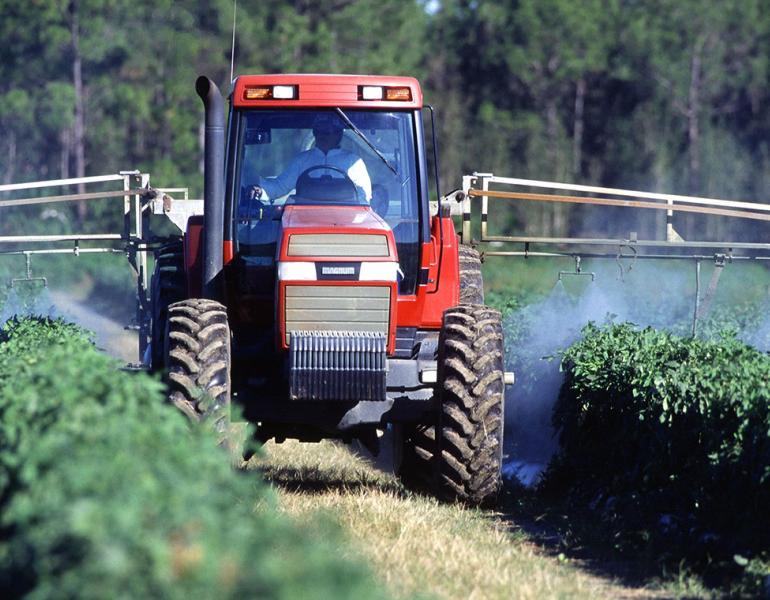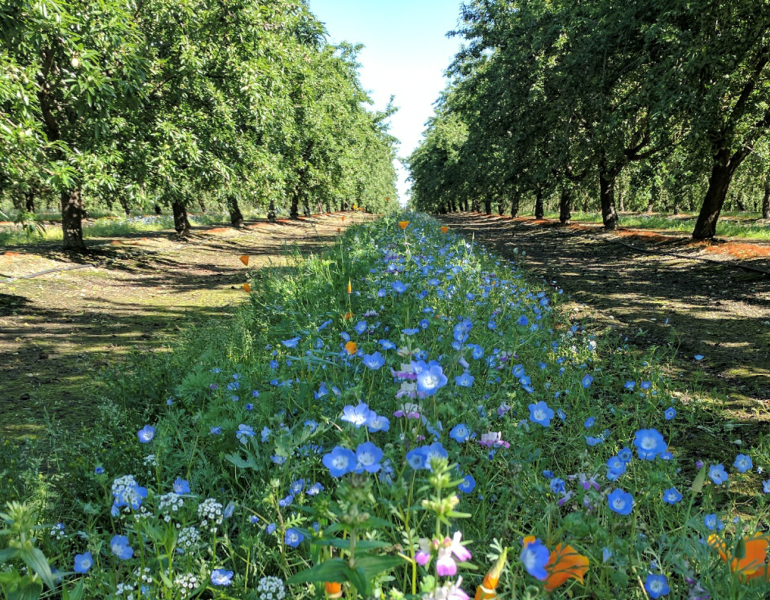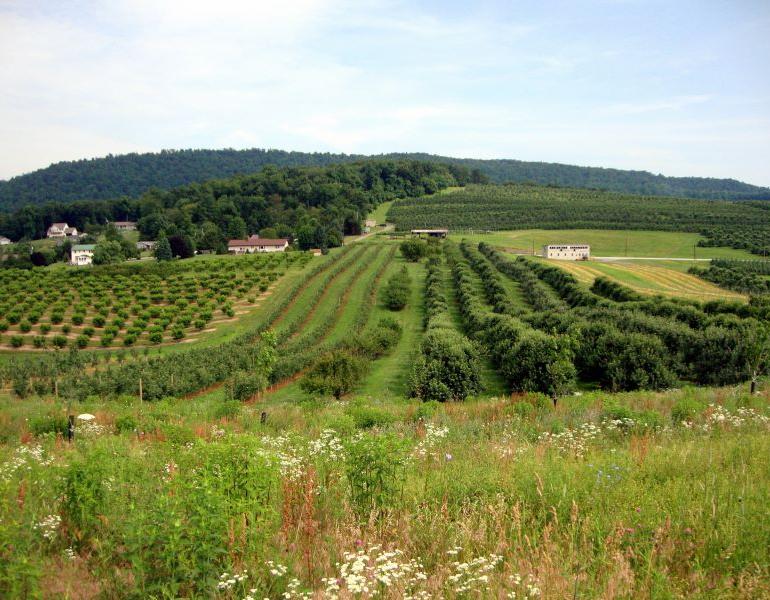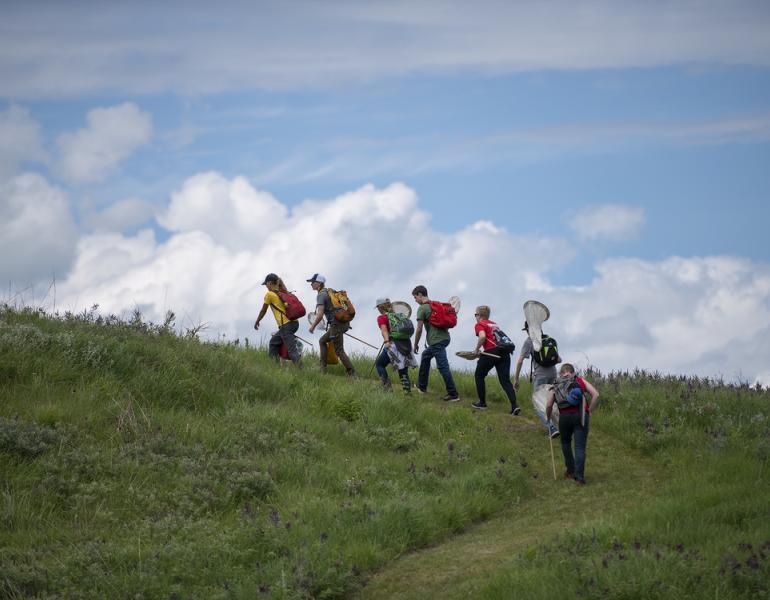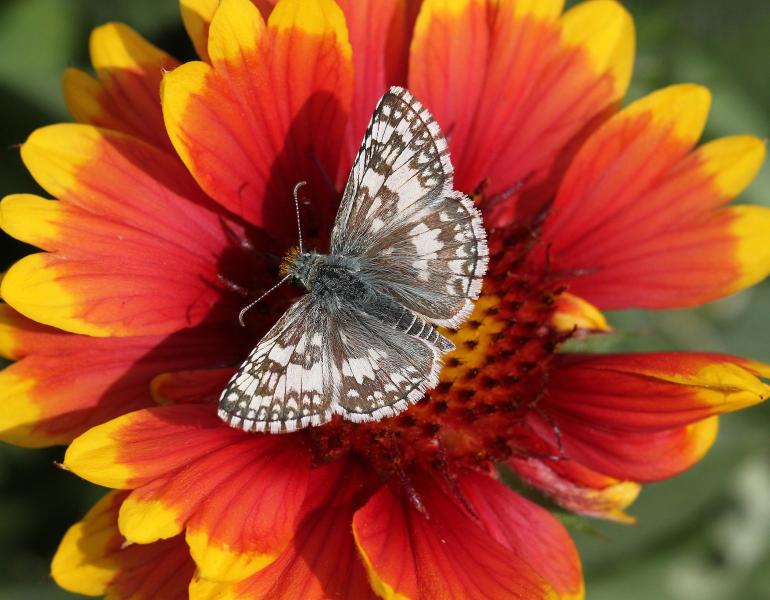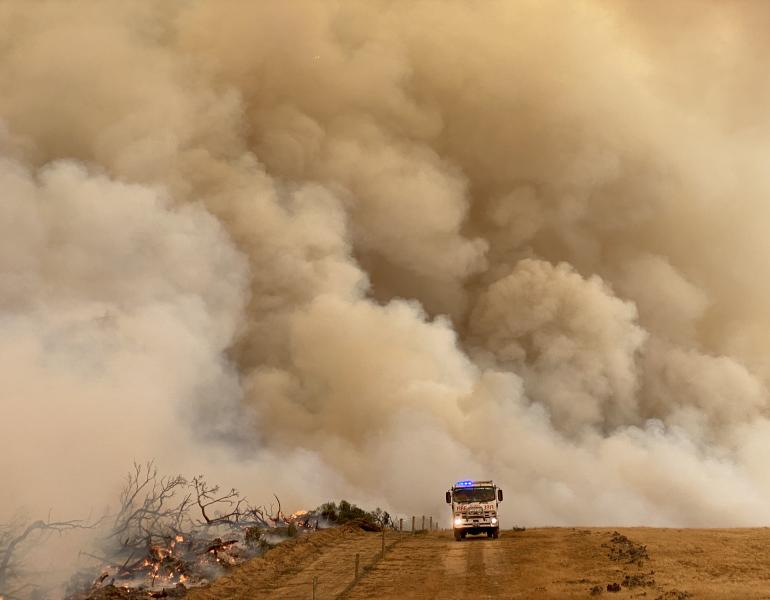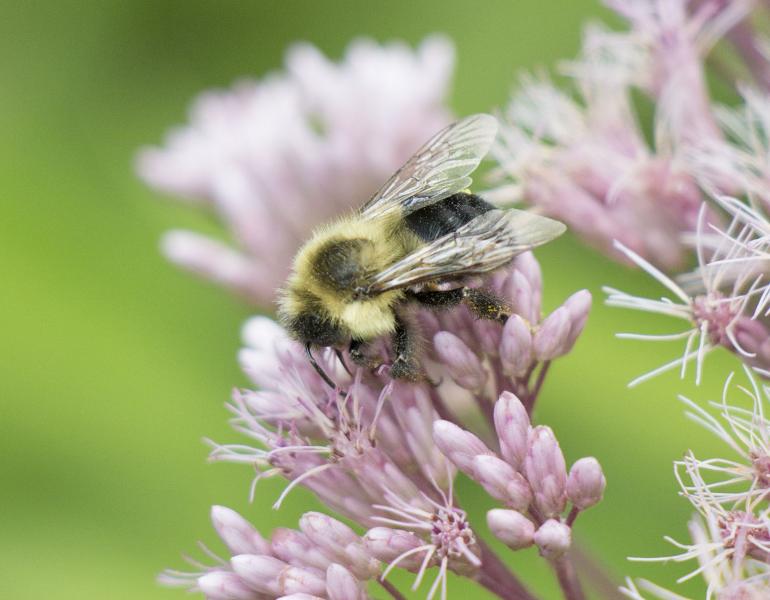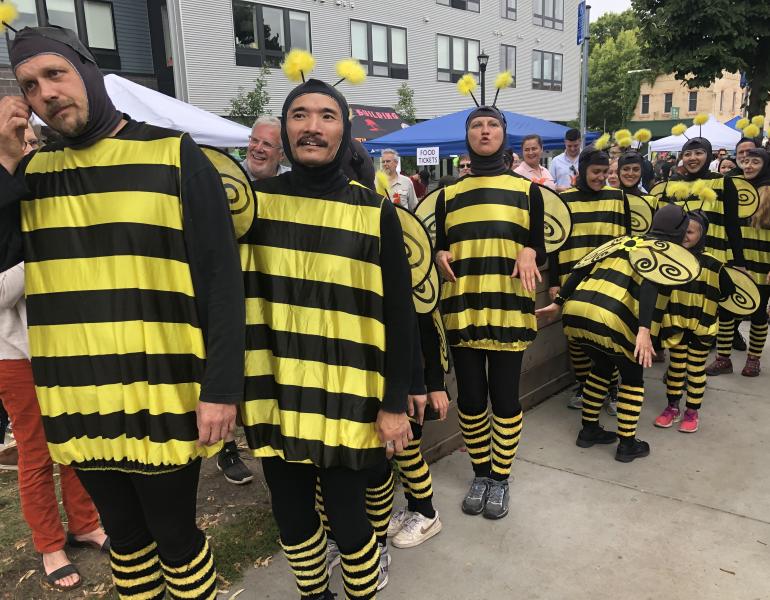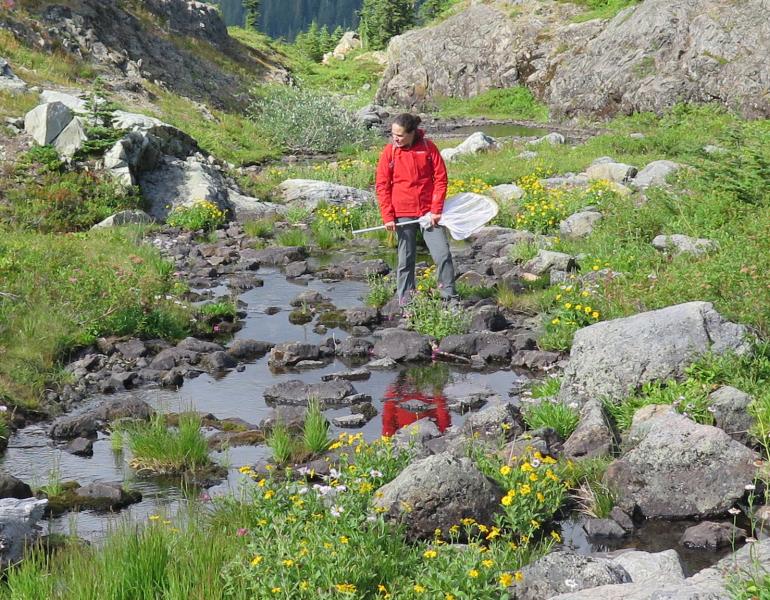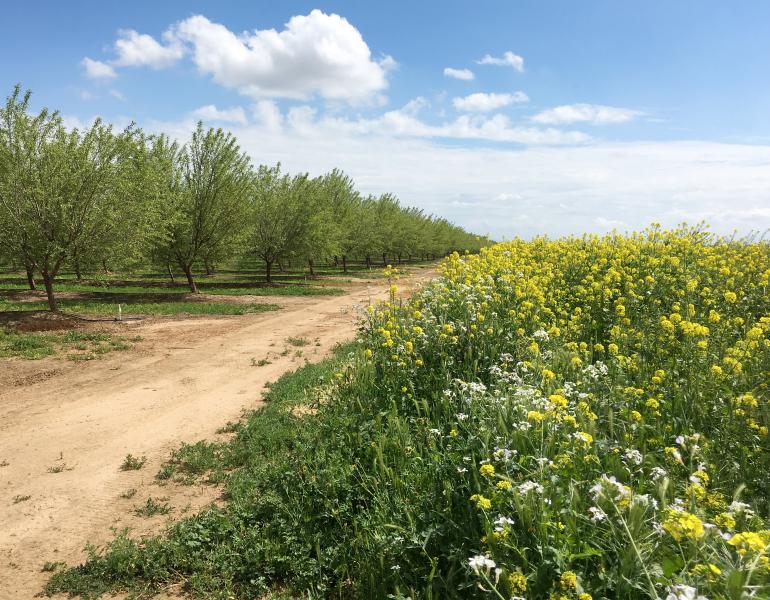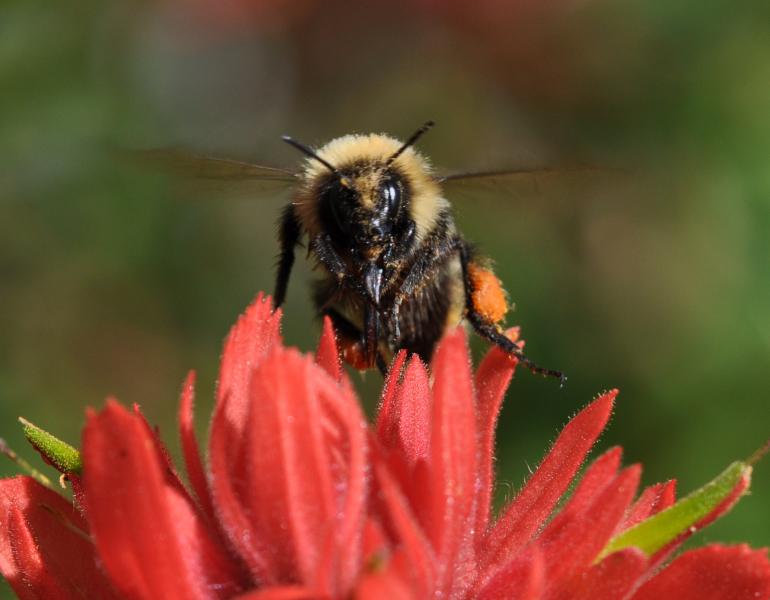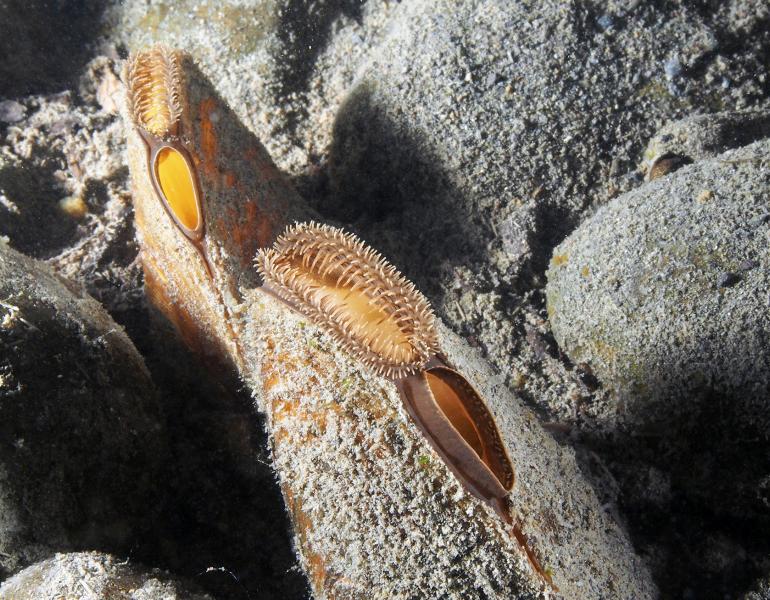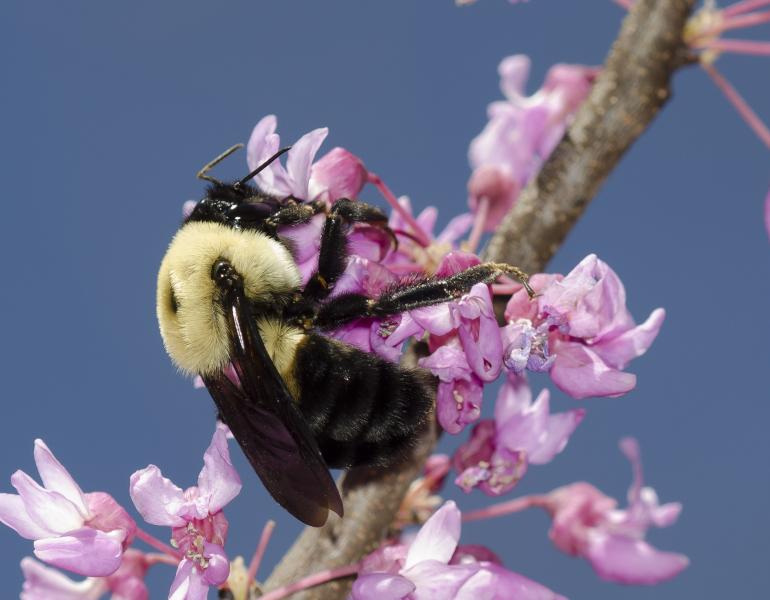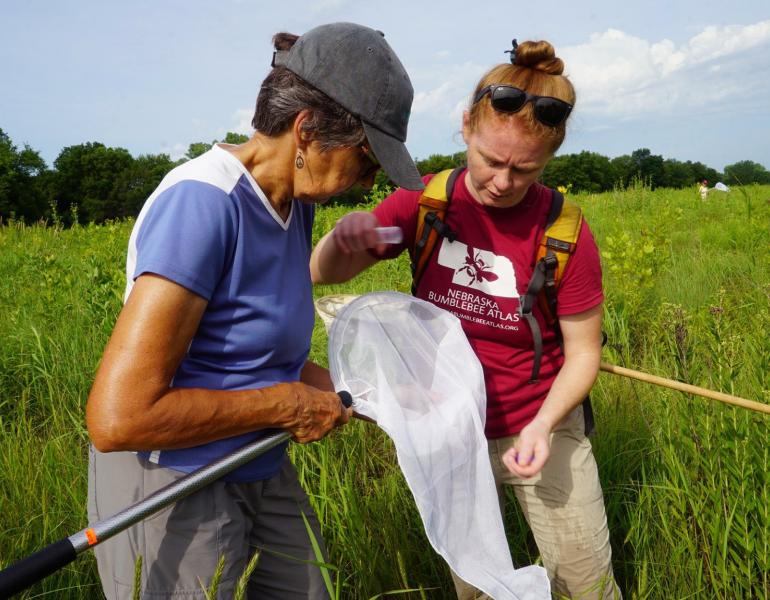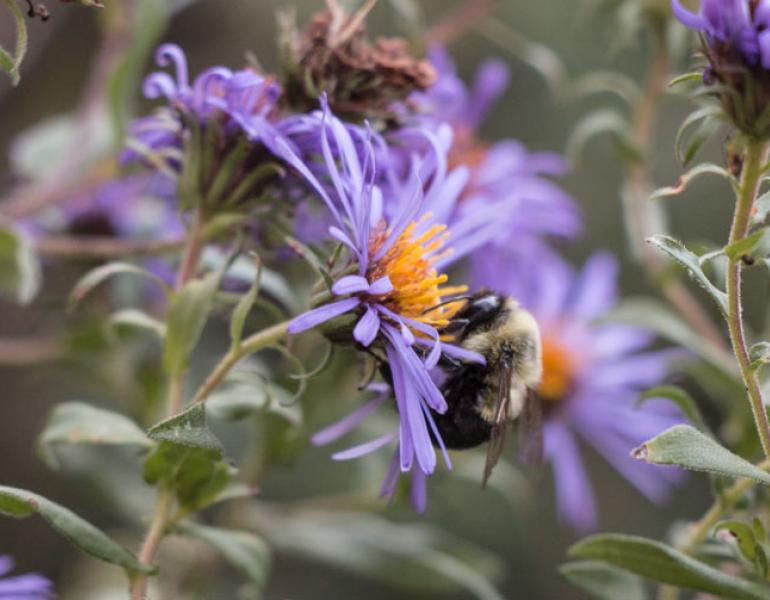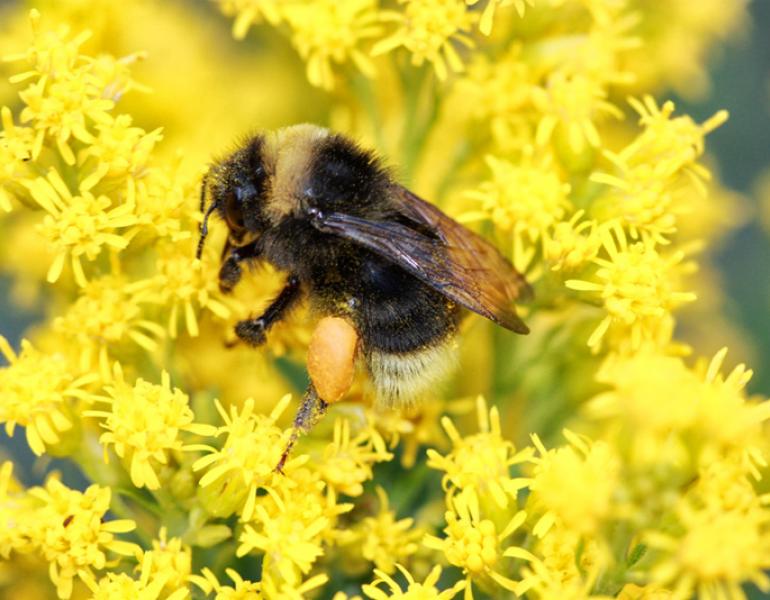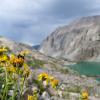Executive director Scott Black shares why Xerces Society doesn't accept funding from companies whose products are harming invertebrates.
Climate Change
High School Students Depave a Parking Lot to Plant a Garden
With support from USDA NRCS, Xerces, and the local community, a Philadelphia high school parking lot became a space for gardening and pollinator habitat.
In Search of the Elusive Northern Forestfly
In a race against climate change as it warms high alpine streams, Senior Endangered Species Conservation Biologist Candace Fallon describes the ongoing hunt for an elusive stonefly, the northern forestfly. Cold-adapted alpine species like the northern forestfly are particularly threatened by extinction due to their patchy distributions, limited dispersal abilities, and reliance on cold water habitats. Fortunately, the increased survey efforts that Xerces and our partners have undertaken over the last few years have resulted in a larger than previously known range and distribution of this species.
More Than Food: A New Roadmap for Agriculture
In recent years, invertebrates on farms have received a little more mainstream attention, often under the broader umbrella of “regenerative agriculture,” a loosely defined philosophy that proposes farms should improve rather than diminish natural resources. With supporting investments from the USDA National Resources Conservation Service (NRCS), the Xerces Society recently inaugurated a five-year, multi-state research and development project focused on evaluating conservation practices that simultaneously maximize climate resilience, biodiversity, and market incentives.
Intrinsically Linked: Why Climate-Smart Agriculture Must Not Neglect Biodiversity
Agriculture is the single largest land use on the planet, with more than 40% of the Earth’s surface devoted to crops or grazing. In order to fully address climate change and sustain agriculture in an unstable climate, we must also address the biodiversity crisis. By making biodiversity conservation a part of regenerative farming and including it in funding options like the USDA Partnerships for Climate-Smart Commodities program, the agricultural sector can tackle both the climate crisis and the biodiversity crisis simultaneously.
For Wildlife and Humans, Native Plants Are a Key to Climate Resilience
In our work, we regularly put an emphasis on the importance of using native plants when creating habitat, whether it’s a new prairie, a farm hedgerow, a meadow in a park, or a flower border in your own backyard. Pollinators are often the principal interest for these types of projects, but the benefits of using native plants go far beyond, including, potentially, into a more climate-resilient future for people and wildlife.
Conserving Desert Pollinators and Water in the Face of Climate Change
One of the most immediate and tangible ways we can prepare for climate change as individuals is to restore native habitat. This not only builds a greater buffer for plants and animals to survive changing conditions, but makes our own gardens and landscapes more prepared to withstand drier or wetter, hotter or colder weather. While it will take everyone to stop rising temperatures at a global scale, I find hope in the cultivation of little patches of earth throughout Santa Fe hosting pollinator habitat kits.
This Earth Week, We’re Finding Hope on the Climate Crisis
The week leading up to Earth Day, now in its 52nd year, is always a great time for reflection for conservationists. For challenges that feel unwieldy, like climate change, taking action helps us to feel less hopeless and more empowered. As we talk with others about what we’re doing and why, we can inspire them to join us.
Santa Fe Pollinator Habitat Kit Program Connects Pollinators and People
In Santa Fe, NM, Xerces is working with local partners to develop a city-wide Pollinator Trail focused on creating connected habitat through neighborhoods that lack greenspaces. In September, after months of planning and preparation, 350 habitat kits were distributed to residents and organizations. When many people come together around a common goal, small efforts can quickly add up to large-scale conservation.
The Merit of Mussels
Freshwater mussels share our rivers and enrich our natural and cultural connections. They keep streams clean, provide habitat for other invertebrates, and support fish populations. Despite their importance, they are among the most threatened groups of wildlife and eight species were recently declared extinct.
Climate News: Nature-Based Climate Solutions Address Climate Change and Support Pollinators
Habitat restoration can contribute to countering climate change. Native trees, shrubs, flowers, and grasses increase carbon sequestration, while also providing habitat for butterflies and bees.
New in Santa Fe: Pollinator Trail and Habitat Kit Program
Santa Fe, New Mexico, is the home of our pilot Pollinator Trail program, which aims to address habitat loss in urban areas. The project will create connected, climate-resilient pollinator habitat in an urban landscape through the distribution of habitat kits and development of partnerships with local organizations to conduct pollinator conservation outreach.
Announcing the 2021 DeWind Award Winners
The DeWind Awards are given annually to students engaged in research related to butterfly or moth conservation. The 2021 winners are Wendy Valencia-Montoya and Chris Halsch.
Forests, Fires, and Insects
Fire has always been part of the ecosystems of the western United States, but the fires we are experiencing now are bigger and hotter than they used to be. This is partly because of years of fire suppression, but is also a result of the changing climate. Invertebrates from caddisflies to slugs to bees and butterflies are likely negatively affected, but we still have much to learn about the effects on these populations.
Mitigating the Effects of Climate Change On Grassland Butterflies
Grasslands provide important habitat for a range of butterflies, some of which rely on these open sunny habitats for survival. Climate change adds an extra layer of threat and concern.
Australia’s Green Carpenter Bee on the Brink
In late 2019, wildfires burned across Australia on an unimaginable scale, devastating towns and forests and pushing a rare bee closer to extinction.
Nature-Based Solutions: A Win for Both Biodiversity and the Climate
Natural areas support wildlife during a time of shifting weather patterns, and they also help with carbon sequestration. Protecting and creating habitat should be an integral part of our response to climate change.
Climate News Roundup: The Link Between Climate Change and Biodiversity
Addressing climate change and conserving biodiversity go hand-in-hand. Our ability to mitigate and adapt to climate change while retaining important ecosystem services such as pollination will depend on our ability to protect biodiversity. Meanwhile, because climate change accelerates biodiversity loss, our ability to protect biodiversity will also depend on how quickly and decisively we act on climate change.
12 Climate Actions for Earth Week
Some good news (amidst all the bad lately) is that even with physical distancing and shelter-in-place requirements, there are still a lot of actions many of us can take to help in the fight against climate change. Focusing on one or any combination of these actions can help.
Evolution in Attitudes Leads to Greater Interest in Pollinator Conservation
Twenty years ago, being referred to as the “bee guy” wasn’t always positive. In contrast, today many people are keen to learn about what they can do to protect pollinators. We are proud to be part of the reason that the public has become more aware of, and engaged in, pollinator conservation.
Xerces' Holistic Approach to Conservation
We at the Xerces Society view our work as an interconnected whole rather than as separate parts. To achieve conservation success, we must understand both science and policy. We need to inspire people and at the same time empower them with the tools they require.
Climate News Roundup: IPCC Lands Report
When most people think about climate change, they likely think of CO2 emissions from cars or factories. But the way land is used and managed has a significant impact on the climate.
Pollinator Conservation Program Digest – October 2019
October's featured staff members recently attended a carbon farm planning training in California, and spoke at an event that paired art and conservation in Iowa.
The Source of Hope and Wonder Comes in Small Packages
Rich Hatfield, senior endangered species conservation biologist and bumble bee lead for the Xerces Society, trekked into Washington state’s Pasayten Wilderness to find the elusive high country bumble bee (Bombus kirbiellus).
Climate News Round-Up: The Power of Trees!
Carbon sequestration is a key component to mitigating the climate crisis. Trees are efficient, effective, and they can be deployed on a large scale. So plant a native tree today!
Announcing the 2019 DeWind Awardees
The Xerces Society is happy to announce the 2019 DeWind awardees: Niranjana Krishnan, a PhD candidate at Iowa State University, and Molly Wiebush, a master’s student at Florida State University.
Mitigating the Effects of Heat on Urban Pollinators
Climate change will bring higher temperatures and greater extremes in weather, as well as increases in the frequency and intensity of heat waves. These variations will be exacerbated in cities in ways that may spell trouble for bees.
Climate News Round-Up: January 2019
Climate change is an unprecedented global challenge. Angela Laws, our resident climate change expert, reviews recent news on the topic and provides concrete ways to help.
Are Freshwater Mussels in Hot Water?
Freshwater mussels play an important role in maintaining water quality in creeks. Climate change is altering water conditions, impacting the mussels and the fish on which they rely for part of their life cycle.
A Shifting Climate Creates Winners and Losers
We are already observing impacts on some species that are emerging earlier or whose distributions are changing, but it is difficult to characterize how insects as a whole will be impacted: some species will benefit while most will lose out.
Unblinded by Science
As the anniversary of the March for Science approaches, we reflect on ways science has informed our conservation efforts over the past year.
Planning Your Plantings for Climate Resiliency
With earlier springs and warmer fall days - pollinators need plants that provide resources at the farthest fringes of the growing season.
Climate Change Driving, Not the Only Passenger; Bumble Bee Conservation in Context
Interpreting recent research about the impacts of climate change on bumble bees, providing context for the results, and examining how they may affect conservation efforts.


